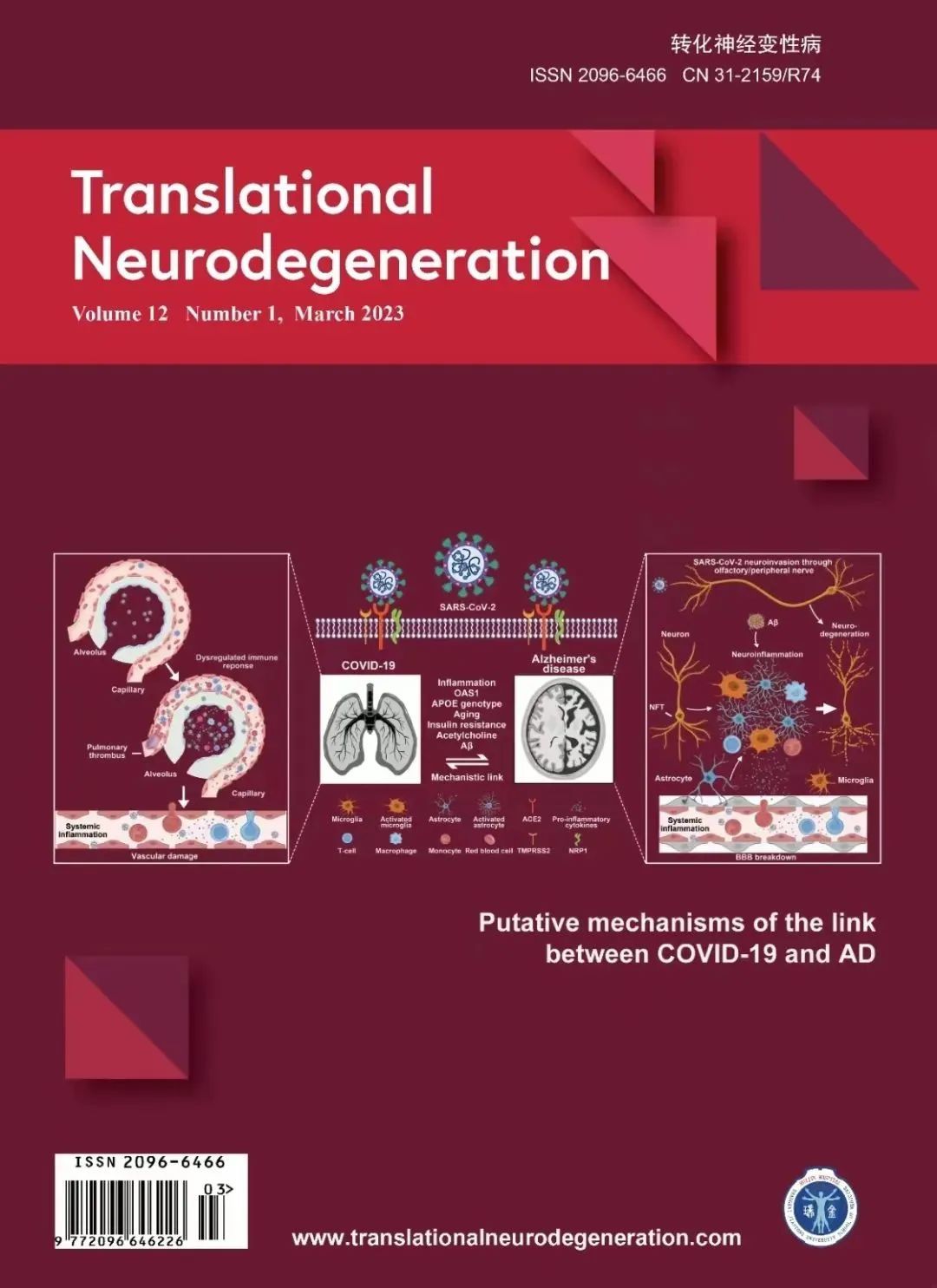补充能产生大量 GABA 的植物乳杆菌 L5,可改善因肠道细菌产生的 GABA 减少而引发的本质性震颤
IF 10.8
1区 医学
Q1 NEUROSCIENCES
引用次数: 0
摘要
γ-氨基丁酸(GABA)假说认为,中枢神经系统中的 GABA 缺乏在本质性震颤(ET)的发病和发展过程中起着重要作用。然而,GABA 缺乏症的具体致病因素尚不清楚。最近,哺乳动物的肠道微生物群被认为是 GABA 的重要来源。此外,源自肠道的 GABA 信号可通过 "肠道神经系统-迷走神经-大脑 "轴传递到大脑。然而,肠道微生物群对 ET 的合理贡献似乎令人鼓舞,但仍然模糊不清。研究人员通过元基因组测序法检测了ET患者和健康对照组的粪便样本,以比较肠道微生物群的组成和参与GABA生物合成的基因的表达。通过将 ET 患者的粪便微生物群移植到小鼠 ET 模型中,探讨了肠道微生物群对 ET 的影响。通过全基因组测序和超高效液相色谱-串联质谱法鉴定了产生大量 GABA 的乳酸菌。随后,小鼠接受了高 GABA 产菌株植物乳杆菌 L5 的治疗。对这些小鼠的震颤严重程度、行为测试、促炎细胞因子、GABA 浓度和肠道微生物群组成进行了检测。ET 患者的肠道微生物群显示 GABA 生产能力受损,粪便中 GABA 浓度降低。在 ET 小鼠模型中,移植 ET 患者的肠道微生物群会导致震颤持续时间延长和活动能力受损。L5表现出更强的GABA产生能力,De Man-Rogosa-Sharpe培养液中含有262毫克/升的GABA。此外,服用 L5 还能明显减轻 ET 小鼠的震颤程度,增强其运动能力和抓握能力。体内机理实验表明,L5重塑了肠道微生物组成,补充了具有GABA产生能力的粘膜相关微生物群,增加了小脑中的GABA浓度,并减轻了中枢神经系统的炎症。这些研究结果突出表明,缺乏能产生 GABA 的肠道微生物在 ET 的发病机制中起着至关重要的作用,而 L5 是治疗 ET 的有希望的候选药物。本文章由计算机程序翻译,如有差异,请以英文原文为准。
Supplementation with high-GABA-producing Lactobacillus plantarum L5 ameliorates essential tremor triggered by decreased gut bacteria-derived GABA
The γ-aminobutyric acid (GABA) hypothesis posits a role of GABA deficiency in the central nervous system in the pathogenesis and progression of essential tremor (ET). However, the specific causative factor for GABA deficiency is not clear. The gut microbiota in mammals has recently been considered as a significant source of GABA. Furthermore, the GABA-based signals originating from the intestine can be transmitted to the brain through the “enteric nervous system–vagus nerve–brain” axis. However, the plausible contribution of gut microbiota to ET seems inspiring but remains obscure. Fecal samples from patients with ET and healthy controls were examined by metagenomic sequencing to compare the composition of gut microbiota and the expression of genes involved in GABA biosynthesis. The impact of gut microbiota on ET was explored through transplantation of fecal microbiota from patients with ET into the murine ET model. Lactic acid bacteria producing high amounts of GABA were identified through whole-genome sequencing and ultra-performance liquid chromatography-tandem mass spectrometry. Subsequently, mice were treated with the high-GABA-producing strain Lactobacillus plantarum L5. Tremor severity, behavioral tests, pro-inflammatory cytokines, GABA concentration, and gut microbiota composition were examined in these mice. The gut microbiota of patients with ET demonstrated an impaired GABA-producing capacity and a reduced fecal GABA concentration. Transplantation of the gut microbiota from patients with ET induced an extension of tremor duration and impaired mobility in the murine model of ET. L5 exhibited an augmented GABA-producing capacity, with the De Man-Rogosa-Sharpe culture broth containing 262 mg/l of GABA. In addition, administration of L5 significantly decreased the tremor severity and enhanced the movement capability and grasping ability of ET mice. In vivo mechanistic experiments indicated that L5 reshaped the gut microbial composition, supplemented the mucosa-associated microbiota with GABA-producing capacity, increased the GABA concentrations in the cerebellum, and diminished inflammation in the central nervous system. These findings highlight that deficiency of GABA-producing gut microbes plays an essential role in the pathogenesis of ET and that L5 is a promising candidate for treating ET.
求助全文
通过发布文献求助,成功后即可免费获取论文全文。
去求助
来源期刊

Translational Neurodegeneration
Neuroscience-Cognitive Neuroscience
CiteScore
19.50
自引率
0.80%
发文量
44
审稿时长
10 weeks
期刊介绍:
Translational Neurodegeneration, an open-access, peer-reviewed journal, addresses all aspects of neurodegenerative diseases. It serves as a prominent platform for research, therapeutics, and education, fostering discussions and insights across basic, translational, and clinical research domains. Covering Parkinson's disease, Alzheimer's disease, and other neurodegenerative conditions, it welcomes contributions on epidemiology, pathogenesis, diagnosis, prevention, drug development, rehabilitation, and drug delivery. Scientists, clinicians, and physician-scientists are encouraged to share their work in this specialized journal tailored to their fields.
 求助内容:
求助内容: 应助结果提醒方式:
应助结果提醒方式:


